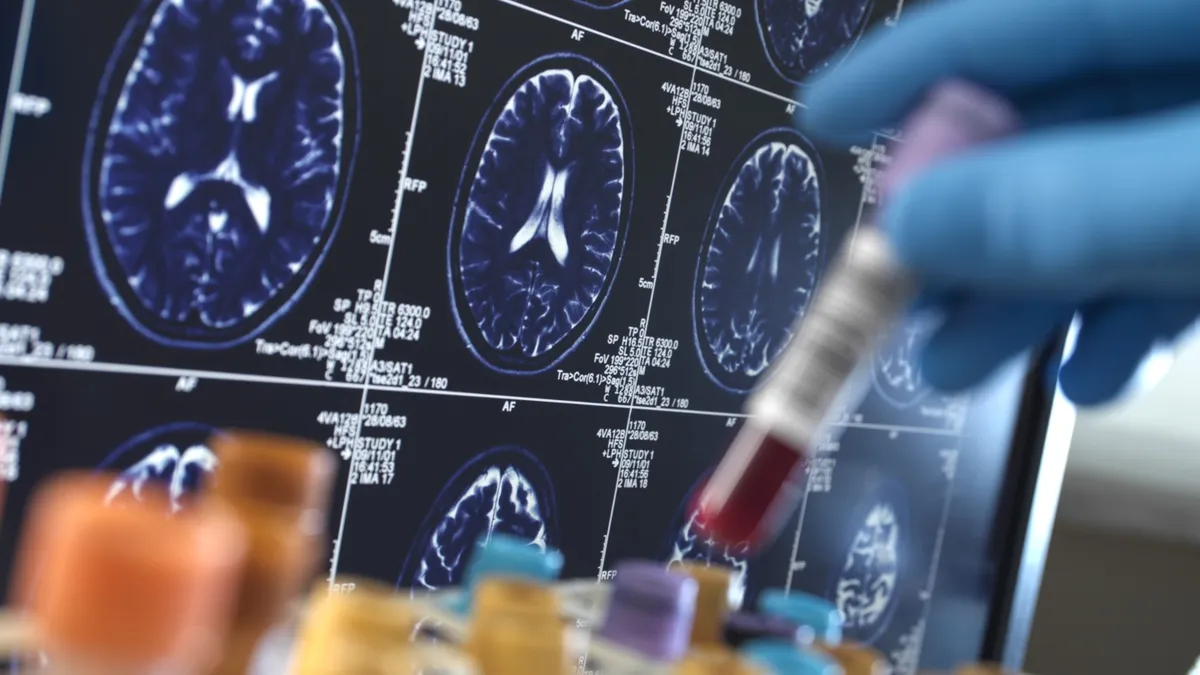
When doctors suspect Alzheimer's disease, they often order a blood test to determine if a patient’s brain contains the sticky amyloid plaques, which are a hallmark of the condition. However, the results of this test may not provide a complete picture, according to Dr. Randall Bateman, a distinguished neurology professor at Washington University in St. Louis. Despite having a significant presence of amyloid, some individuals may not exhibit any symptoms of dementia or memory loss. To address this, Dr. Bateman and his team have developed a groundbreaking blood test that can indicate whether Alzheimer’s has begun to impact a person’s cognitive abilities.
This innovative blood test complements another new spinal fluid test that predicts whether brain changes associated with Alzheimer’s are likely to affect cognitive function. As noted by Tony Wyss-Coray, a neurology professor at Stanford University, the spinal fluid test is a strong predictor of memory impairment. Both tests, recently detailed in the journal Nature Medicine, hold promise for helping doctors identify patients who may benefit from treatments aimed at clearing amyloid plaques from the brain. Both tests were developed with funding from the National Institutes of Health.
The blood test stems from a quest to discover better Alzheimer's biomarkers—measurable substances in the body that signify the presence of the disease. Dr. Bateman and his team focused on tau tangles, which are abnormal protein clumps that form inside the neurons of Alzheimer’s patients. These tau tangles, alongside amyloid plaques, are key indicators of the disease. The researchers found that a specific region of the tau protein was critical in damaging neurons and causing memory loss, leading to the identification of a new biomarker known as MTBR-tau243.
Compared to the biomarkers associated with amyloid plaques, MTBR-tau243 showed a much stronger correlation with memory loss, symptom onset, and stages of dementia—elements that matter significantly to patients. Initially, measuring this new biomarker required spinal fluid, but the team successfully developed a blood test that can assess levels of abnormal tau protein in patients’ brains. Dr. Bateman emphasizes that this blood test will provide a quick and easy method for doctors to determine whether amyloid plaques are genuinely affecting a patient's cognition.
Once available commercially, this blood test will allow healthcare professionals to make more informed decisions regarding treatment options. Dr. Bateman highlights the potential for this test to help determine how much benefit a patient might expect from undergoing treatment to remove amyloid plaques. This advancement could significantly influence patient care strategies in the fight against Alzheimer’s disease.
In addition to the blood test, a new spinal fluid test developed by Wyss-Coray’s team at Stanford aims to uncover whether specific proteins change in response to memory impairment. They analyzed over 7,000 proteins in the spinal fluid of more than 3,000 participants, identifying two proteins that could serve as potential biomarkers. One protein's levels increased significantly in individuals with memory problems, while another's declined sharply. By creating a ratio between these two proteins, the researchers found a reliable indicator of memory health.
This ratio also has the potential to predict future memory decline in genetically predisposed individuals—rising 10 to 20 years before an official Alzheimer’s diagnosis, according to Wyss-Coray. This early detection is crucial as it aligns with the onset of subtle cognitive impairment signs. Both proteins involved in this test play a role in regulating synapses, which are the connections between neurons. Dr. Paul Worley, a professor of neuroscience at Johns Hopkins University, noted the significance of these changes in protein levels in relation to Alzheimer’s.
Dr. Worley points out that understanding the role of synapses in Alzheimer’s disease opens avenues for potential treatments aimed at preserving their function. His research indicates that increasing levels of the protein associated with synapse function might provide a strategy for preventing or treating Alzheimer’s. The findings suggest that even when amyloid plaques are present, maintaining normal protein levels could help individuals remain cognitively healthy.
In summary, the advancements in Alzheimer’s testing through new blood and spinal fluid tests represent a significant leap forward in early detection and intervention strategies, ultimately improving patient outcomes in the battle against this devastating disease.